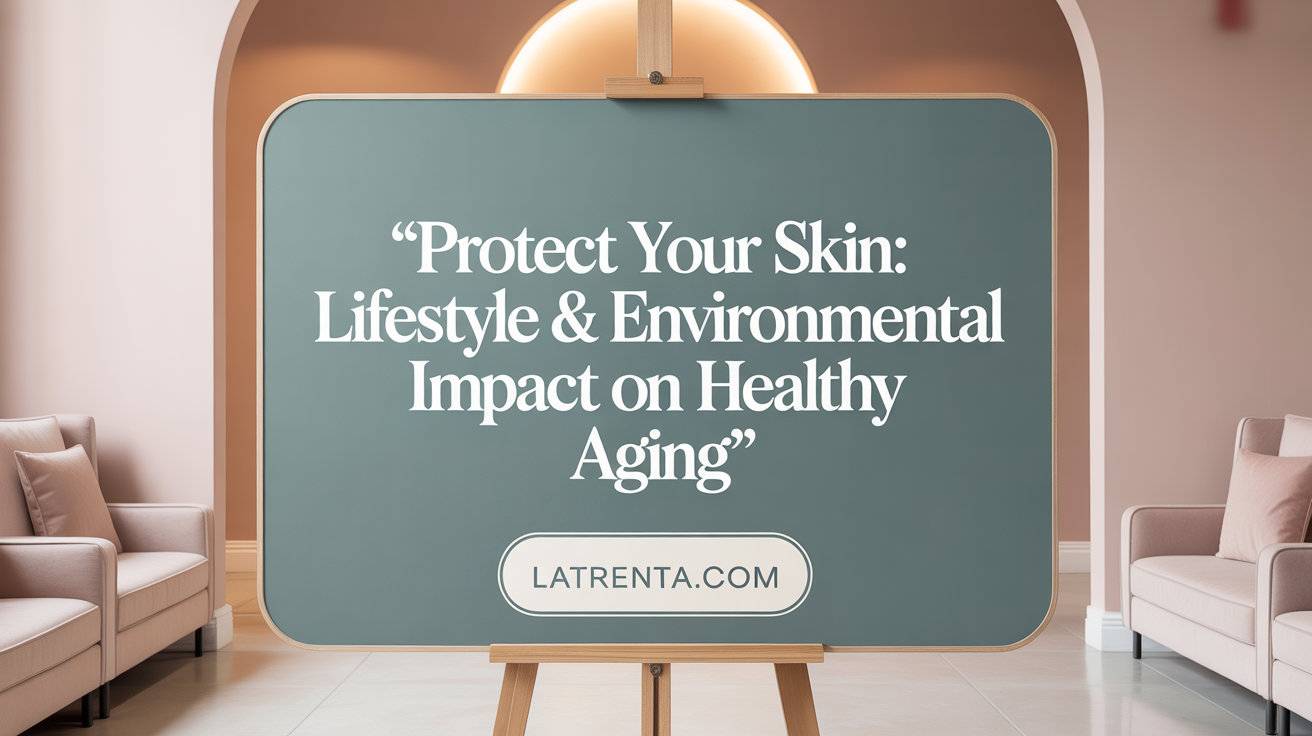Why Early Detection of Aging Signs Matters
Before undergoing cosmetic or dermatological procedures, recognizing the early and progressive signs of aging skin is essential for effective treatment planning. Skin aging is a complex process influenced by genetics, environmental factors, and lifestyle choices. This article guides readers through the key indicators of aging skin, the underlying causes, and how to assess skin readiness for procedures to ensure the best results and long-term skin health.
Common and Hallmark Signs of Aging Skin

What are the most common signs of aging skin?
The most visible indicators of aging skin include the appearance of wrinkles, sagging, and a loss of skin firmness. As collagen and elastin fibers decrease over time, skin becomes thinner, more fragile, and less elastic. This results in fine lines around the eyes, mouth, and forehead. Age spots or
Understanding Types and Causes of Skin Aging

What are the types of skin aging and their causes?
Skin aging can be categorized into two main types: intrinsic and extrinsic. Intrinsic aging, also known as chronological aging, is a natural process driven by genetic factors and the passage of time. It results in gradual changes such as decreased collagen and elastin production, thinning skin, and reduced cell turnover. Extrinsic aging is caused by external environmental influences. The most significant of these is sun exposure, which accelerates aging through photoaging, leading to fine lines, wrinkles, age spots, and loss of skin elasticity. Smoking is another external factor that diminishes collagen and elastin, further speeding up skin deterioration. Lifestyle behaviors also play crucial roles. Poor diet high in sugars and refined carbs, excessive alcohol consumption, chronic stress, inadequate sleep, and poor skincare routines can all contribute to premature aging. Hormonal fluctuations, especially during menopause, cause skin thinning and dryness. Additionally, biochemical changes such as increased oxidative stress and the build-up of free radicals damage skin cells over time. Understanding these factors highlights the importance of comprehensive approaches—combining sun protection, healthy habits, and targeted skincare—to preserve youthful skin.
Factors influencing skin aging
| Influencing Factors | Effect on Skin | Additional Details |
|---|---|---|
| Genetics | Predetermined aging traits | Affects baseline skin condition and aging speed |
| Sun exposure | Photoaging, wrinkles, spots | UV rays cause collagen breakdown and pigmentation |
| Lifestyle choices | Premature aging, skin damage | Diet, smoking, alcohol, stress, sleep quality |
| Environmental pollutants | Damage to skin barrier | Pollution and toxins accelerate aging |
| Hormonal changes | Dryness, thinning, laxity | Particularly evident in menopause |
| Biochemical changes | Increased oxidative stress | Free radicals damage skin cells and DNA |
Environmental and behavioral contributors to premature aging
External factors such as UV radiation from sunlight, exposure to pollutants, smoking, and unhealthy lifestyles greatly influence premature skin aging. UV rays are responsible for around 80-90% of visible signs of aging, causing wrinkles, pigmentation, and loss of elasticity. Artificial sources like tanning beds further exacerbate this damage. Pollutants in the air, such as smog and chemicals, can impair skin barrier function, leading to dullness and premature fine lines. Smoking not only damages lung health but also diminishes collagen, leading to sagging and wrinkling. Excessive alcohol intake dehydrates skin and hampers its ability to repair. Conversely, behaviors like wearing sun protection, avoiding smoking, maintaining a nutritious diet rich in antioxidants, and getting adequate sleep help delay aging signs. Regular physical activity boosts circulation and supports healthy skin.
Biochemical changes underlying skin aging
As skin ages, internal biochemical processes change. Collagen and elastin, essential for skin firmness and elasticity, decrease in production. Oxidative stress, driven by internal factors and external insults like UV radiation, damages skin cell DNA and proteins. This leads to the formation of wrinkles, sagging, thinning, and uneven pigmentation. The skin’s natural ability to shed old cells slows down, resulting in dullness and uneven texture. Dehydration becomes more pronounced as natural oil production declines after age 40. Understanding these biological mechanisms underscores the importance of antioxidants, retinoids, and other specialized skincare ingredients that can support skin repair and aging resistance.
Early Signs to Watch For: Recognizing Premature and Progressive Aging

Timeline of aging onset by decades
Skin aging is a gradual process that starts in your 20s, with visible signs becoming more noticeable around your 30s and 40s. In your 20s, your skin is still producing high levels of collagen and elastin, key proteins that keep skin firm and smooth. By the time you reach your 30s, collagen production begins to slow, and early signs such as fine lines, dryness, and uneven texture may appear.
In your 40s, these signs become more pronounced, with sagging, deeper wrinkles, and age spots showing up. The 50s and beyond often bring increased skin thinning, loss of elasticity, and more prominent age spots. Recognizing these stages helps in adopting targeted skincare routines for each decade.
Visible indicators such as fine lines, uneven tone, and dryness
Initial cues of skin aging include the formation of fine lines, especially around the eyes, mouth, and forehead. Skin may also appear dull or uneven in tone due to accumulated photodamage over time. Dryness is a common early sign, caused by decreased natural oil production, which makes skin appear tight, flaky, and less radiant.
Other signs include larger pores, rough texture, and early forms of age spots or hyperpigmentation. Monitoring these changes can alert you to adapt your skincare regimen proactively.
Premature aging signs and their triggers
Premature aging occurs when skin shows signs of aging before the expected age, often before 35. Common triggers include excessive sun exposure, smoking, poor diet, dehydration, chronic stress, insufficient sleep, and pollution. These external factors accelerate collagen breakdown and cause early wrinkles, uneven tone, and loss of skin firmness.
Early signs also include dullness, fine lines, and rough skin texture. Recognizing these signs early and identifying their triggers allows for prompt intervention through lifestyle changes and protective skincare.
The importance of monitoring skin texture and pigmentation changes
Regularly assessing your skin's texture and pigmentation can help detect early aging signs. Changes such as rough, uneven, or flaky skin may indicate slowed cell turnover or damage from environmental exposure. Pigmentation irregularities like dark spots or blotchy areas are often caused by sun damage and melanin fluctuations.
Early detection of these signs enables timely use of treatments like exfoliants, antioxidants, and photoprotection, delaying more advanced aging. Monitoring changes regularly encourages proactive skincare habits to maintain youthful and healthy skin longer.
How Professionals Diagnose Aging Skin

Methods used by skin specialists to assess aging
Skincare professionals employ a combination of visual assessments and diagnostic tools to evaluate skin aging. They carefully observe features such as wrinkles, fine lines, sagging, age spots, and changes in skin texture. Advanced imaging technologies, like dermoscopy or skin cameras, can provide detailed views of the skin’s layers, revealing deeper structural changes that are not visible to the naked eye.
Role of medical history including sun exposure and lifestyle habits
A comprehensive medical history is crucial in diagnosing skin aging. Skin specialists ask about the patient’s sun exposure history, recent sunburns, and use of tanning beds, as ultraviolet radiation significantly accelerates skin aging. They also inquire about lifestyle choices such as smoking, alcohol consumption, diet, and stress levels, all of which influence the aging process. Knowledge of past skin conditions and treatments helps in tailoring personalized care.
Physical examination parameters
During the physical exam, practitioners look for specific signs of aging, including the presence of wrinkles around the eyes, mouth, and forehead, loss of skin elasticity, dark spots, and sagging skin. They measure skin thickness, assess pore size, and evaluate the skin’s hydration level. The examination may also include assessing the skin’s response to gentle probing to determine firmness and resilience.
Use of diagnostic tools and importance of professional evaluation
Certain diagnostic tools, like skin imaging devices or biopsies, can assist in identifying underlying causes of visible aging signs. These evaluations help determine collagen levels, elastin integrity, and overall skin health. Professional evaluation is essential because it provides a detailed understanding of the skin’s condition, which guides effective treatment plans—whether through topical therapies, procedures, or lifestyle adjustments.
How do you diagnose aging skin?
Diagnosing aging skin involves a thorough evaluation by skin specialists, who look for visible signs such as wrinkles, fine lines, sun damage, sagging, and loss of firmness. They also assess underlying factors like decreased collagen and elastin levels, which contribute to reduced skin elasticity. Medical history reviews are essential, including questions about sun exposure, sunburn history, smoking habits, and lifestyle factors that accelerate aging. Physical examinations may include visual inspections and diagnostic tests, such as skin imaging or biopsies if needed. Overall, diagnosis integrates clinical observations with patient history to determine the extent of skin aging and appropriate treatment options.
Effective Skincare Routines and Prevention Strategies

What are effective skin care routines and prevention methods to slow skin aging?
Developing a consistent skincare routine is essential for delaying the signs of aging. Start with gentle cleansing twice daily using a mild, sulfate-free cleanser to remove dirt and excess oils without stripping natural oils.
Following cleansing, applying targeted treatments such as vitamin C serums provides antioxidant protection, brightens skin tone, and stimulates collagen production. Retinol or other derivative products are highly effective in reducing fine lines and refining skin texture. Moisturizers containing hyaluronic acid and ceramides are beneficial because they help lock in moisture, maintaining skin hydration and strengthening the skin’s outer barrier.
Sun protection is a cornerstone of anti-aging care. Use a broad-spectrum sunscreen with at least SPF 30 every day, even on cloudy days, to shield skin from UV damage—one of the leading causes of premature aging, including wrinkles and age spots.
In addition to topical products, adopting a healthy lifestyle significantly impacts skin health. Avoid smoking and limit alcohol intake, both of which accelerate aging by damaging collagen and elastin. Maintain a diet rich in antioxidants from fruits, vegetables, and green tea to combat oxidative stress.
Getting adequate sleep allows skin repair processes to function effectively, while reducing stress can minimize cortisol-related skin damage. Wearing hats and sunglasses outdoors further protects against UV rays.
Patience and consistency are vital; visible improvements often take several months. Combining good skincare habits with healthy living boosts the skin’s resilience and appearance, helping you maintain a youthful, vibrant complexion for years to come.
Preparing Your Skin for Cosmetic Procedures: What to Know
How do I assess my skin condition before treatments?
Before undergoing cosmetic procedures, it's essential to evaluate your skin's current health. A dermatologist can examine signs like wrinkles, age spots, uneven texture, dryness, and sagging. Monitoring recent changes helps identify early aging signs and determine appropriate treatments. Understanding your skin type—whether normal, oily, sensitive, dry, or combination—allows for tailored skincare routines that support aging skin.
How do aging signs influence cosmetic procedure choices?
The visible effects of aging, such as loss of elasticity, volume loss, and skin laxity, guide the selection of treatments. For example, wrinkles around the eyes and mouth may respond well to Botox or dermal fillers, while deeper skin rejuvenation might require laser resurfacing or chemical peels. Addressing uneven pigmentation or age spots could involve specific light-based therapies.
Why is professional consultation and personalized planning important?
Consulting with a skin specialist ensures a customized approach, based on medical history, skin condition, and aging signs. A professional can identify underlying issues like sun damage or thinning skin and recommend suitable procedures. Crafting a personalized plan maximizes results, reduces risks, and helps set realistic expectations.
What role do dermatological treatments like Botox, chemical peels, and fillers play?
Botox can relax dynamic wrinkles caused by facial expressions, while chemical peels remove damaged outer layers to improve texture and tone. Fillers restore lost volume, especially in the upper face and cheeks, giving a more youthful appearance. Combining these treatments with skincare routines, sun protection, and lifestyle changes can effectively manage and delay aging signs.
Applying proper pre-procedure skin assessment and preparation enhances treatment outcomes. Starting early and maintaining good skincare habits, like moisturizing and using antioxidants, supports healthier skin before and after procedures.
Lifestyle and Environmental Factors Impacting Skin Aging

Sun exposure and its effects
Sun exposure is a primary cause of skin aging, responsible for about 80-90% of visible signs such as wrinkles, discoloration, and loss of elasticity. Ultraviolet (UV) rays damage the skin's elastin and collagen fibers, leading to sagging and premature aging. Artificial UV sources like tanning beds accelerate these effects further. Protecting skin with broad-spectrum sunscreen SPF 30 or higher, wearing hats, and seeking shade during peak sun hours are essential steps in prevention.
Pollution, smoking, and other accelerated aging contributors
Environmental pollutants, cigarette smoke, and exposure to chemicals can speed up aging processes by generating free radicals that damage skin cells. Smoking particularly decreases collagen and elastin, leading to wrinkles and sagging sooner. Pollutants in the air contribute to oxidative stress, causing dullness, uneven pigmentation, and rough skin texture. Limiting exposure and adopting antioxidant-rich skincare routines can mitigate some of these impacts.
The impact of diet, hydration, sleep, and stress management
A balanced diet rich in antioxidants from fruits, vegetables, and omega-3 fatty acids supports healthy skin by fighting oxidative stress. Staying well-hydrated maintains skin moisture and elasticity. Adequate sleep allows for skin repair, while chronic stress can accelerate aging by increasing cortisol levels that break down collagen. Managing stress through relaxation techniques, regular exercise, and good sleep hygiene helps promote youthful skin.
Practical tips to protect skin from extrinsic aging
- Use a broad-spectrum sunscreen daily, even when cloudy.
- Avoid tanning beds and limit sun exposure during peak hours.
- Incorporate antioxidant skincare products to neutralize free radicals.
- Maintain a healthy, balanced diet and stay hydrated.
- Quit smoking and limit alcohol intake.
- Reduce exposure to air pollution when possible.
- Get sufficient sleep and practice stress reduction.
- Regularly cleanse and moisturize to strengthen the skin barrier.
Following these lifestyle habits can significantly delay visible signs of aging, promoting healthier, more resilient skin at any age.
Taking Charge of Your Skin’s Aging Journey
Recognizing and understanding the signs of aging skin before undergoing cosmetic or dermatological procedures is essential to optimizing outcomes and maintaining long-term skin health. By identifying early indicators such as wrinkles, uneven pigmentation, and loss of elasticity, you can tailor your skincare and treatment plans effectively. Combining professional diagnosis with consistent skincare routines and healthy lifestyle choices helps slow the progression of skin aging and enhances your skin’s vitality. Early and proactive care, guided by experienced specialists, empowers you to age gracefully and make informed decisions about the best treatments suited to your unique skin condition.
References
- Identification of Signs of Early Aging Skin - Woseth Dermatology
- Your Guide to Managing the First Signs of Aging | Atlanta Face & Body
- Diagnosing Aging Skin - NYU Langone Health
- Simple Anti-Aging Skincare Routine - CeraVe
- Identifying the Early Signs of Aging and How to Address Them
- Premature Aging Skin Treatment | Advanced Dermatology, P.C.
- Does Your Skin Start Aging at 30? 7 First Signs, 6 Tips - MedicineNet
- The Science of Skin Aging: Causes and Anti-Aging Solutions
